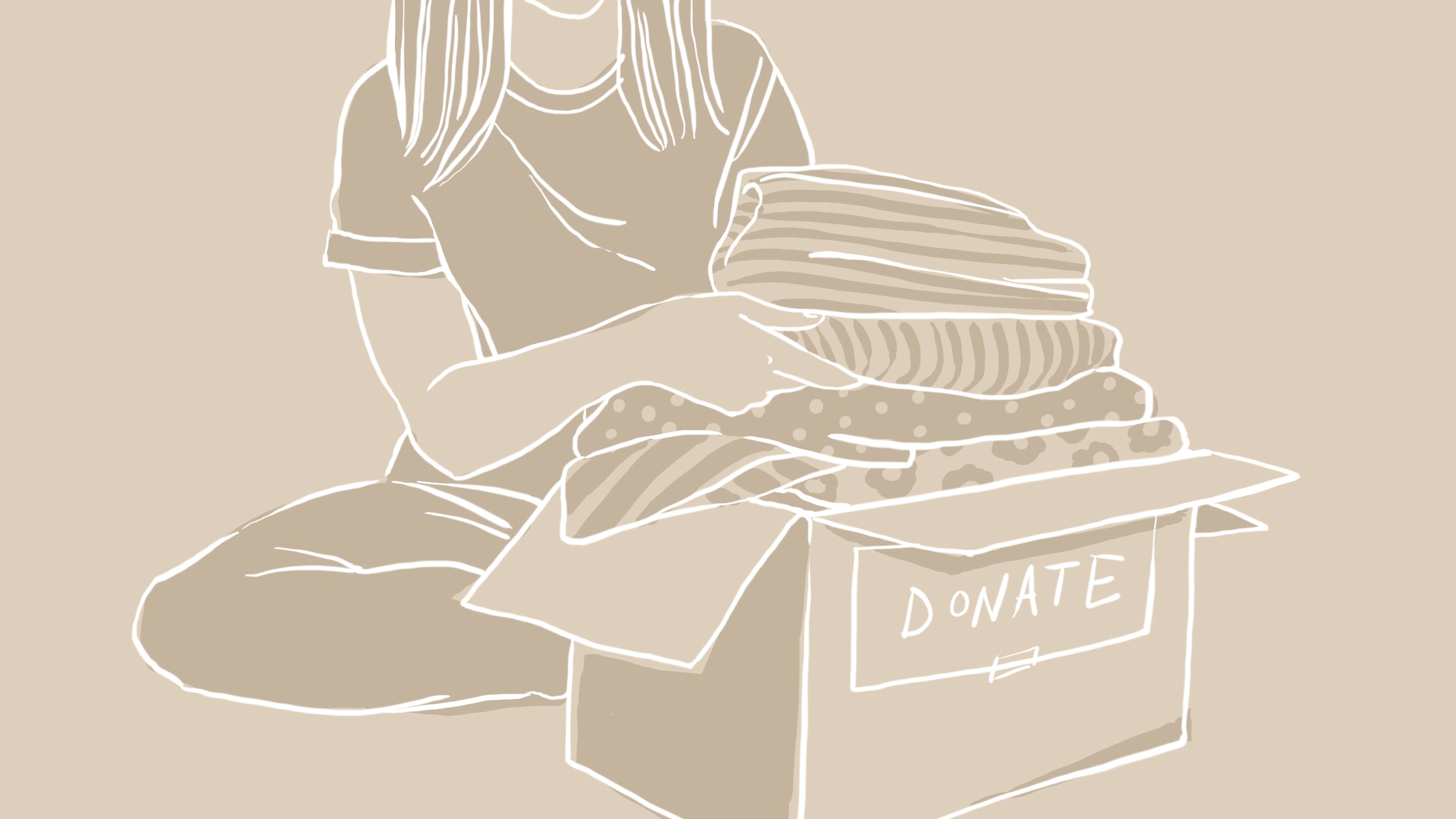Clothing that can’t be sold in a thrift store will most likely be sent to rag houses (businesses that ship clothing overseas to developing countries to be resold) and those items are often sent to overseas clothing markets and can end up in landfills. To avoid such a fate, follow these 6 tips to make the biggest impact the next time you donate clothes to a thrift store.
5 Tips to Read Before Your Next Donation to the Thrift Store
5 Tips to Make the Most of Your Clothing Donations
1. Donate In-Season Clothing
Donating to your local thrift store is one of the best solutions for clothing recycling, but too often these small stores get overwhelmed with items that they can’t sell. Just like regular retail stores, thrift stores can only sell items that are in season and have limited storage for items to hold future seasons. That means, if you want to donate bulky sweaters during the summer in a beach town – put those away in a clearly labeled bag or bin to donate in the fall instead (see tip #3).
2. Donate Clothes in Great Condition
Thrift stores often receive really worn, stained, and dirty clothing, but most don't have laundry facilities. Always wash, iron and fold your donations before donating. Not sure whether or not to donate? Think to yourself: does it look like something you would buy?
Here are a few other things to consider:
• Wrinkled: it does take a little time, but pressing items before donating makes them much more likely to be resold.
• Spots or Stains: launder and spot treat the item before donating.
• Holes, Tears or Snags: If it’s something you can mend, do it before donating. Otherwise, consider repurposing as a rag or reusable bag.
• Never Donate Undergarments.
3. Shoes, oh the Shoes
Thrift stores can usually only sell new or barely used shoes, and just like cleaning they don’t usually have the resources to clean and buff or repair shoes. If you have a new pair of shoes you haven’t worn – that’s a great donation. However, when it’s time to get rid of your worn shoes you may be better off environmentally by seeing if a friend wants them or disposing of them properly.
4. Only Donate Accepted Categories
Many thrift stores don’t sell certain categories. Check their website or call before bringing in your donation and sort out anything that they won’t use. If a store doesn’t take children’s clothes or bedding the staff will have to sort and dispose or donate those items to a different facility, ultimately increasing the carbon footprint of your items.
5. Divide Up your Clothing Donations
Yes, it may seem like a hassle to have to go to two different locations to drop things off when you are trying to donate, but getting the items into the right hands can ensure your items are reused in a meaningful way.
• Office Attire: organizations like Dress For Success can give those items to people who truly need them, fulfilling their highest and best use.
• New/Unworn socks or underwear: a local homeless shelter, refugee agency or domestic abuse center may really be in need of those items.
• Children’s Items: A children’s specific thrift or consignment store or a domestic abuse center.
You can also combine efforts with friends or neighbors to make the extra trip more worthwhile – and make a bigger impact (all while cutting down on carbon emissions by grouping the effort together).
But those clothing donation drop bins are so much easier!
Yes, they are certainly easier, but should only be used if you really, really need to quickly dispose of clothing. Items dropped there don’t get reused in your local community, but instead go to large sorting facilities where clothing is often bailed and sent to markets in Accra, Ghana – perpetuating environmental colonialism. Garments that are not fashionable for that market and climate end up in landfills, creating an influx of too much waste for their landfills to hold. Check out this article to learn more about the realities of clothing donations.
We all have so many options when it comes to recycling clothing (we wrote about it here), but when it comes to donating to an organization your local thrift shop is a great solution.
We hope these tips help you navigate how to make the most of your donations.



















0 comments